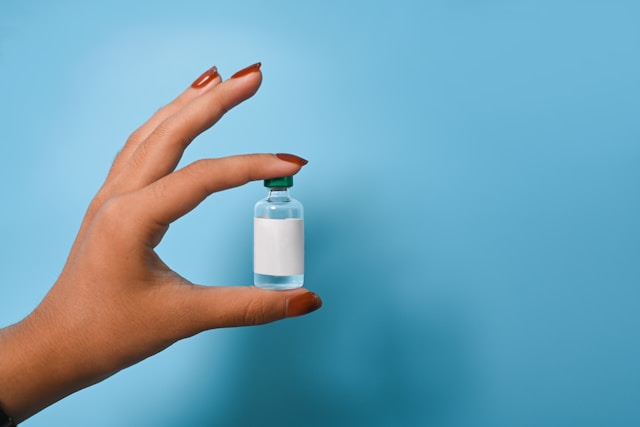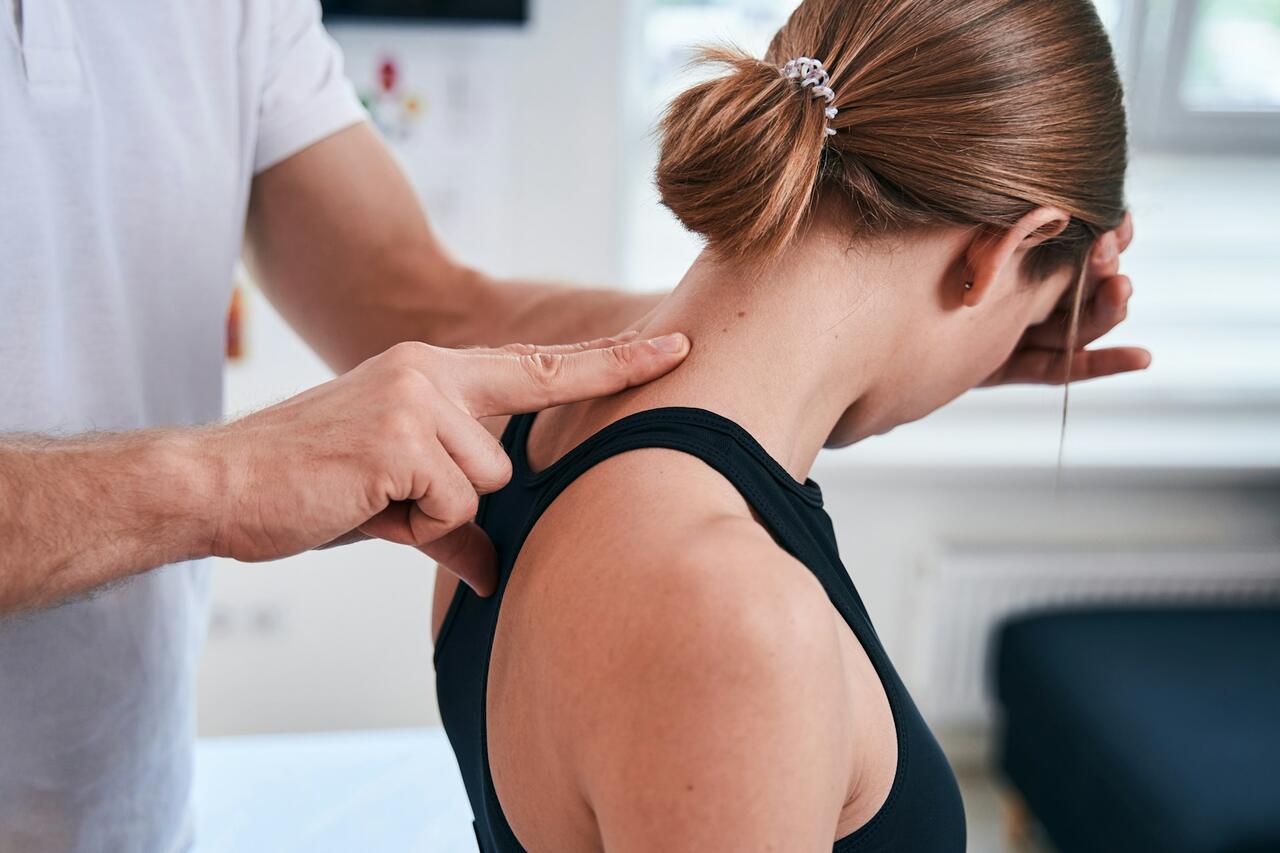This article is for informational purposes only and does not constitute medical advice. Always consult with a qualified healthcare provider before considering any peptide therapy.
Tendon injuries are among the most challenging issues in orthopedic medicine. Unlike muscle tissue, tendons heal slowly and often do not heal completely. This leaves many people dealing with ongoing pain and limited function. Peptide therapy has become a promising method to speed up healing. Certain peptides can help form new blood vessels, reduce inflammation, and encourage collagen production in damaged tendons.
The research on these therapies focuses on synthetic peptides like BPC-157, TB-500, and GHK-Cu. These healing peptides each address different parts of the healing process. While animal studies show impressive results, there is still a lack of human clinical data. This creates a gap between growing interest and proven effectiveness.
Quick Takeaways
- Tendons heal poorly due to limited blood supply and low cell density, making peptide-based angiogenesis particularly valuable for repair
- BPC-157 shows the strongest preclinical evidence for tendon healing, with studies reporting increased load-to-failure and improved functionality in animal models
- TB-500 works by mobilizing cells to injury sites and reducing inflammatory cytokines that delay tendon recovery
- No peptide therapy for tendons currently has FDA approval, and human clinical trials remain scarce despite widespread use
Why Are Tendons So Hard to Heal?
Tendons face unique biological issues that make them very hard to repair. These dense connective tissues have little blood supply compared to muscle, making them hypovascular. They also have far fewer cells per volume than other tissues, which means they are hypocellular.
This combination leads to a slow healing process. When you tear or strain a tendon, your body reacts differently than it does to a muscle injury. Instead of forming healthy tissue, tendons usually heal by creating scar tissue. This scar tissue lacks the strength and flexibility of the original tendon.
The healing process goes through three phases. The inflammatory phase lasts from days 1 to 5, followed by the repair phase from days 5 to 14. The remodeling phase then continues from day 14 for 90 days or longer. Peptides target different stages of this process to speed up recovery.
How Do Peptides Support Tendon Repair?
Peptides work by modulating multiple biological pathways simultaneously. Research from the University of Utah’s Department of Physical Medicine & Rehabilitation shows these compounds facilitate healing through their “ability to modulate angiogenesis, inflammation, nitric oxide signaling, neurotransmitters, and tissue-specific repair”.
The mechanisms break down into several key actions:
- Angiogenesis promotion: New blood vessel formation delivers oxygen and nutrients to the injury site
- Fibroblast proliferation: Increased production of cells that manufacture collagen
- Collagen synthesis: Building blocks for tendon structural repair
- Inflammation modulation: Controlling the inflammatory response to prevent excessive tissue damage
These pathways interconnect in ways that amplify healing potential. When peptides increase blood vessel formation, for example, they simultaneously improve nutrient delivery and cellular signaling throughout the damaged area.
BPC-157: The Best Peptide for Tendon Repair?

BPC-157 is a synthetic 15-amino acid peptide originally isolated from human gastric juice by Dr. Predrag Sikiric at the University of Zagreb School of Medicine in 1993. It has become the most extensively studied peptide for musculoskeletal healing applications, with some strong evidence for tendon and ligament repair.
The peptide’s popularity stems from consistent findings across dozens of animal studies. A 2025 systematic review in the Orthopaedic Journal of Sports Medicine analyzed 36 studies spanning 1993-2024, demonstrating that “BPC-157 helps promote healing by boosting growth factors and reducing inflammation.”
What Makes BPC-157 Work for Tendons?
BPC-157 operates through several interconnected molecular pathways. Research published in the Journal of Molecular Medicine demonstrated that the peptide enhances vascular endothelial growth factor receptor-2 (VEGFR2) activity and nitric oxide signaling primarily through activation of the Akt-eNOS pathway.
This pathway increases nitric oxide production, which proves critical for endothelial proliferation, vessel dilation, and new capillary formation. More blood vessels mean better nutrient delivery to damaged tendons.
A 2014 study in Molecules by Chang et al. found that BPC-157 increased the expression of growth hormone receptor in tendon fibroblasts at both the mRNA and protein levels. The increases reached up to sevenfold at day three of treatment. This enhanced responsiveness to growth hormone amplifies the anabolic healing response in tendon tissue.
What Does Research Show About BPC-157?
The preclinical evidence base is substantial, though it comes exclusively from animal models. Key findings include:
- Achilles Tendon Repair: In rats with transected Achilles tendons, BPC-157 treatment resulted in increased load to tendon failure and higher functionality scores over 14 days. Histologically, treated tendons showed more mononuclears and less granulocytes, with better formation of fibroblasts, reticulin, and collagen.
- Ligament Healing: A 2010 study by Cerovecki demonstrated healing of surgically transected medial collateral ligaments in rats, with BPC-157 improving ligament healing compared to controls.
- Tendon-to-Bone Integration: Studies showed BPC-157 not only improves tendon healing but also enhances tendon-to-bone integration, even in the presence of corticosteroids, which typically impair recovery.
Only three published human studies exist on BPC-157. A 2021 retrospective study by Lee and Padgett examined 16 patients who received intraarticular knee injections with BPC-157 alone or combined with thymosin-beta-4. The results showed 14 out of 16 patients (87.5%) reported significant pain relief at 6 months to 1 year follow-up.
Third-Party Tested, 99% Purity
Order lab-verified peptides from our top recommended vendor.

TB-500: Supporting Tissue Regeneration
TB-500 is a synthetic fragment of thymosin beta-4, a naturally occurring 43-amino acid peptide found throughout the body. It has gained attention for tissue regeneration properties that complement BPC-157’s mechanisms. While TB-500 and thymosin beta-4 share similar functions, TB-500 offers advantages in terms of stability and commercial availability.
The peptide demonstrates different biological actions than BPC-157, making it a popular combination therapy. Many practitioners pair these peptides in what’s commonly called the “Wolverine Stack” for injury recovery.
How Does TB-500 Aid Tendon Healing?
TB-500’s primary mechanism involves binding to G-actin monomers, preventing their polymerization into F-actin filaments. This process is critical for mobilizing cells to injury sites, where they contribute to rebuilding tissue, reducing scar formation, and increasing elasticity in damaged tendons.
The peptide demonstrates anti-inflammatory properties by reducing pro-inflammatory cytokines including TNF-α, IL-1β, and IL-6. It also promotes suppression of nuclear factor-kappa B activation, which helps control excessive inflammation that can delay healing.
TB-500 activates Akt/PI3K survival pathways promoting cell survival and proliferation. It also enhances hepatocyte growth factor expression, which drives tissue regeneration processes.
What Results Have Studies Found?
An important study by Malinda et al. published in the Journal of Investigative Dermatology found that thymosin beta-4 increased reepithelialization by 42% over saline controls at 4 days and by as much as 61% at 7 days post-wounding. Treated wounds showed increased collagen deposition and angiogenesis.
For musculoskeletal applications, preclinical studies have shown some effectiveness in:
- Achilles tendon rupture repair with enhanced functional recovery
- Rotator cuff injury recovery and strength restoration
- Ligamentous healing enhancement with improved structural integrity
- Skeletal muscle regeneration following trauma or surgical intervention
Research also indicates TB-500 promotes reduction of muscle fibrosis, preventing long-term functional impairment that can occur after injury.
Other Peptides for Tendon Support

While BPC-157 and TB-500 dominate the research landscape, several other peptides show promise for tendon healing through different mechanisms.
GHK-Cu (Copper Peptide)
GHK-Cu is a naturally occurring tripeptide (glycine-histidine-lysine) bound to copper that declines with age. Research published in the International Journal of Molecular Sciences shows it stimulates blood vessel and nerve outgrowth, increases collagen, elastin, and glycosaminoglycan synthesis, and supports dermal fibroblast function.
The peptide regulates numerous cellular processes involved in tissue repair, including proliferation, migration, and differentiation. GHK-Cu stimulates the expression of transforming growth factor-beta and vascular endothelial growth factor, promoting angiogenesis and collagen synthesis.
In animal models of tendon injury, GHK copper supplementation accelerated tissue regeneration, improved biomechanical properties, and reduced scar formation. The peptide’s ability to modulate metalloproteinases facilitates extracellular matrix remodeling during the healing process.
PEDF-Derived 29-mer
The PEDF-derived 29-mer peptide represents a newer development in tendon regeneration research. Derived from Pigment Epithelium-Derived Factor, this peptide targets tendon stem/progenitor cells directly.
A 2019 study in PLOS ONE by Ho et al. found that tendons treated with this peptide regained 89.1% of their original strength, compared to just 68.7% with standard treatment. The peptide works by dramatically increasing the number of active tendon stem cells at the injury site, nearly four times more than in untreated injuries.
This mechanism differs from BPC-157 and TB-500, offering a complementary approach to tendon healing through stem cell activation rather than angiogenesis alone.
Collagen Peptides
Unlike BPC-157 and TB-500, collagen peptides are taken orally as nutritional supplements and work through different mechanisms. A 2024 systematic review with meta-analysis found that long-term collagen peptide intake showed statistically significant effects in favor of:
- Fat-free mass improvement
- Tendon morphology enhancement
- Muscle architecture changes
- Maximal strength increases
- 48-hour recovery improvements
A randomized controlled trial examining specific collagen peptides combined with resistance training found significantly greater increase in tendon cross-sectional area (11.0%) compared with the placebo group (4.7%). Researchers concluded that enhancing tendinous cross-sectional area through collagen peptides has the potential to act preventively against sports-related tendon injuries.
How Do Peptides Compare to Other Treatments?
A 2025 meta-regression analysis from the Journal of Clinical Medicine compared regenerative therapies including peptides, PRP, and mesenchymal stem cells across 59 studies.
| Therapy Type | Mean Pain Reduction | Studies Analyzed |
|---|---|---|
| Mesenchymal Stem Cells | 45.0% ± 3.85% | 20 |
| Platelet-Rich Plasma (PRP) | 41.0% ± 6.36% | 20 |
| Biomimetic Materials | 37.4% ± 2.82% | 7 |
| Peptide-Based Therapies | 35.5% ± 3.03% | 10 |
While peptide therapies demonstrated moderate effectiveness, the analysis noted they showed improvement in tendon healing and pain management but limited long-term evidence. Peptide therapy was significantly less effective in pain reduction than MSC therapy, though comparable to PRP and biomimetic approaches. For people seeking comprehensive pain management strategies, combining different regenerative approaches may produce better outcomes than single interventions.
Are Peptide Therapies Safe for Tendon Repair?
Safety considerations remain one of the most contested aspects of peptide therapy for tendons. The regulatory status and limited human data create uncertainty about risk profiles.
What About FDA Approval?
BPC-157 is not FDA-approved for human use. In September 2023, the FDA classified it as a Category 2 bulk drug substance, effectively barring its inclusion in compounded medications due to concerns about safety, impurities, and insufficient human data.
According to the FDA, BPC-157 cannot be legally prescribed or sold over the counter as a drug, food, or dietary supplement in the United States. This creates a challenging situation where the peptide is widely discussed but legally unavailable through standard medical channels.
BPC-157 is listed in class S0: Non-Approved Substances on the World Anti-Doping Agency’s Prohibited List, making it banned for athletes both in and out of competition. The U.S. Anti-Doping Agency states the safety and effectiveness of BPC-157 have not been thoroughly evaluated in humans.
What Side Effects Should You Know About?
While preclinical safety data appear favorable, with one study finding no identified toxic or lethal thresholds and no observed teratogenic, genotoxic, or anaphylactic effects in animals, limited human data means potential risks remain poorly characterized.
Theoretical concerns include:
- Pathologic angiogenesis potentially promoting tumor growth
- Toxic metabolite formation from proline breakdown
- Excessive nitric oxide production affecting hemoglobin function and drug metabolism
Research also suggests BPC-157 may actually inhibit uncontrolled cell proliferation, downregulate VEGF expression, and counteract VEGF-driven tumorigenesis. This creates a complex safety picture requiring more human investigation.
A 2025 pharmacokinetic pilot study in two healthy adults receiving intravenous BPC-157 up to 20 mg found no adverse events or clinically meaningful changes observed in vital signs, electrocardiograms, or laboratory biomarkers. While encouraging, this extremely small sample size limits conclusions.
💡PEPTIDE PICKS
- Want to explore peptide combinations for recovery? Learn about peptide stacking strategies for optimal healing and synergistic effects.
- Curious about peptide safety profiles? Discover what you need to know about TB-500 side effects before starting treatment.
- Struggling with joint pain? Check out BPC-157’s potential for joint repair and cartilage regeneration.
What Dosing Protocols Do Studies Use?
Based on preclinical and limited clinical data, dosing protocols generally follow these patterns, though standardization remains a significant challenge.
Injectable BPC-157:
- Dosing typically ranges from 150-500 micrograms once or twice daily
- Administered subcutaneously or intramuscularly, often near the injury site
- Treatment cycles of 2-6 weeks for mild to moderate injuries, potentially longer for severe conditions
Oral BPC-157:
- Doses generally range from 100-500 mcg, taken 1-2 times daily
- May be more effective for gastrointestinal applications
- Lower bioavailability compared to injectable forms
TB-500:
- Typically dosed at 2-2.5 mg twice weekly during loading phases
- Maintenance dosing of 2-2.5 mg once weekly
- Often combined with BPC-157 in recovery protocols
Collagen Peptides:
- 5-15 grams daily combined with exercise
- Best taken 30-60 minutes before physical activity
- Ongoing supplementation recommended for sustained benefits
These protocols derive from preclinical studies and anecdotal clinical experience rather than validated human trials. A 2025 review emphasized that optimal dosage and delivery methods for peptides remain under-researched, leading to variable clinical outcomes.
Should You Consider Peptide Therapy for Tendons?
The decision to pursue peptide therapy for tendon injuries involves weighing promising preclinical data against significant evidence gaps and regulatory concerns.
Who Might Benefit?
People with chronic tendon injuries who have exhausted conventional treatments may find peptide therapy worth exploring, though this requires accepting the experimental nature of these interventions. Conditions that might respond to peptide therapy include:
- Achilles tendinopathy resistant to physical therapy
- Rotator cuff injuries with incomplete healing
- Tennis elbow or golfer’s elbow not responding to conventional care
- Patellar tendinopathy affecting athletic performance
Athletes must recognize that BPC-157 and TB-500 are prohibited substances under WADA guidelines. Using these peptides could result in competition bans and other penalties. Athletes seeking performance enhancement and recovery should explore approved alternatives that don’t violate anti-doping regulations.
What Are the Limitations?
The fundamental limitation is the paucity of human data. As researchers from the University of Utah stated in their 2025 narrative review, “Until well-designed human trials are conducted and published, BPC-157 should not be recommended for clinical use in musculoskeletal medicine.”
Other limitations include:
- Products marketed as “research chemicals” lack quality assurance and may contain contaminants
- Long-term safety data remains scarce, with most studies following patients for only 12-24 months
- Optimal dosing and delivery methods remain unclear
- Cost can be significant without insurance coverage or FDA approval
PRP therapy has extensive clinical research with multiple randomized controlled trials confirming long-term symptom relief and tendon healing for conditions like lateral epicondylopathy. FDA-approved options with human trial data may represent safer alternatives for many people.
Bottom Line
Peptide therapy for tendon repair shows robust preclinical promise but lacks the clinical validation needed for confident recommendation. BPC-157 demonstrates impressive effects on angiogenesis, fibroblast activity, and collagen synthesis in animal models, with preliminary human data suggesting potential benefit and acceptable short-term safety profiles. TB-500, GHK-Cu, and emerging peptides offer additional mechanisms for tissue regeneration.
The current evidence base cannot support routine clinical recommendation. These compounds should be considered investigational until well-designed clinical trials assess safety, efficacy, and clinical utility in humans. The regulatory classification by both the FDA and WADA reflects genuine uncertainty about human safety and efficacy profiles.
For people managing tendon injuries, evidence-based approaches including structured rehabilitation, properly prepared PRP in appropriate clinical contexts, and collagen peptide supplementation alongside exercise represent the most defensible treatment strategies.
FAQ
How long does it take for peptides to heal tendons?
Animal studies show measurable improvements in tendon healing within 2-4 weeks of peptide therapy. Human timelines remain unclear due to limited clinical data, though anecdotal reports suggest 4-8 weeks for noticeable changes in chronic injuries.
Can you take BPC-157 and TB-500 together for tendon repair?
Many practitioners combine these peptides due to their complementary mechanisms. BPC-157 focuses on angiogenesis and growth factor activation, while TB-500 addresses cell mobilization and inflammation. No studies directly compare combination therapy to single-agent treatment.
Are oral peptides as effective as injections for tendon healing?
Injectable forms likely offer better bioavailability for systemic effects, particularly when administered near injury sites. Oral BPC-157 may work better for gastrointestinal applications than musculoskeletal injuries, though direct comparative studies are lacking.
Do collagen peptides work the same way as BPC-157 for tendons?
No. Collagen peptides provide amino acid building blocks for collagen synthesis and are taken orally as supplements. BPC-157 works through cellular signaling pathways to promote angiogenesis and tissue repair. They represent different therapeutic approaches that could potentially complement each other.
How much do peptide therapies for tendon repair cost?
Costs vary widely since these therapies operate outside standard insurance coverage. Monthly expenses can range from $200-800 depending on the peptide, dosage, and source. Collagen peptides are significantly less expensive at $30-60 monthly.
References
- McGuire FP, Martinez R, Lenz A, Skinner L, Cushman DM (2025) Regeneration or Risk? A Narrative Review of BPC-157 for Musculoskeletal Healing. Current Reviews in Musculoskeletal Medicine 18:611–619
- Wang X-Y, Qu M, Duan R, Shi D, Jin L, Gao J, Wood JD, Li J, Wang G-D (2018) Cytoprotective Mechanism of the Novel Gastric Peptide BPC157 in Gastrointestinal Tract and Cultured Enteric Neurons and Glial Cells. Neuroscience Bulletin 35:167–170
- Vasireddi N, Hahamyan H, Salata MJ, Karns M, Calcei JG, Voos JE, Apostolakos JM (2025) Emerging Use of BPC-157 in Orthopaedic Sports Medicine: A Systematic Review. HSS Journal®: The Musculoskeletal Journal of Hospital for Special Surgery 21:485–495
- Hsieh M-J, Liu H-T, Wang C-N, Huang H-Y, Lin Y, Ko Y-S, Wang J-S, Chang VH-S, Pang J-HS (2016) Therapeutic potential of pro-angiogenic BPC157 is associated with VEGFR2 activation and up-regulation. Journal of Molecular Medicine 95:323–333
- Chang C-H, Tsai W-C, Hsu Y-H, Pang J-H (2014) Pentadecapeptide BPC 157 Enhances the Growth Hormone Receptor Expression in Tendon Fibroblasts. Molecules 19:19066–19077
- Staresinic M, Sebecic B, Patrlj L, et al (2003) Gastric pentadecapeptide BPC 157 accelerates healing of transected rat Achilles tendon and in vitro stimulates tendocytes growth. Journal of Orthopaedic Research 21:976–983
- Cerovecki T, Bojanic I, Brcic L, Radic B, Vukoja I, Seiwerth S, Sikiric P (2010) Pentadecapeptide BPC 157 (PL 14736) improves ligament healing in the rat. Journal of Orthopaedic Research 28:1155–1161
- Pickart L, Margolina A (2018) Regenerative and Protective Actions of the GHK-Cu Peptide in the Light of the New Gene Data. International Journal of Molecular Sciences 19:1987
- Lee E, Burgess K (2025) Safety of Intravenous Infusion of BPC157 in Humans: A Pilot Study. Alternative Therapies in Health and Medicine
- Malinda KM, Sidhu G, Mani H, Banaudha K, Maheshwari R, Goldstein A, Kleinman H (1999) Thymosin beta4 accelerates wound healing. Journal of Investigative Dermatology 113 3:364–8
- Ho T-C, Tsai SH, Yeh S-I, Chen S-L, Tung K-Y, Chien H-Y, Lu Y-C, Huang C-H, Tsao Y-P (2019) PEDF-derived peptide promotes tendon regeneration through its mitogenic effect on tendon stem/progenitor cells. Stem Cell Research & Therapy.
- Bischof K, Moitzi AM, Stafilidis S, König D (2024) Impact of Collagen Peptide Supplementation in Combination with Long-Term Physical Training on Strength, Musculotendinous Remodeling, Functional Recovery, and Body Composition in Healthy Adults: A Systematic Review with Meta-analysis. Sports Medicine 54:2865–2888
- Jerger S, Centner C, Lauber B, Seynnes O, Friedrich T, Lolli D, Gollhofer A, König D (2023) Specific collagen peptides increase adaptions of patellar tendon morphology following 14‐weeks of high‐load resistance training: A randomized‐controlled trial. European Journal of Sport Science 23:2329–2339
- Goulian AJ, Goldstein B, Saad MA (2025) Advancements in Regenerative Therapies for Orthopedics: A Comprehensive Review of Platelet-Rich Plasma, Mesenchymal Stem Cells, Peptide Therapies, and Biomimetic Applications. Journal of Clinical Medicine 14:2061








